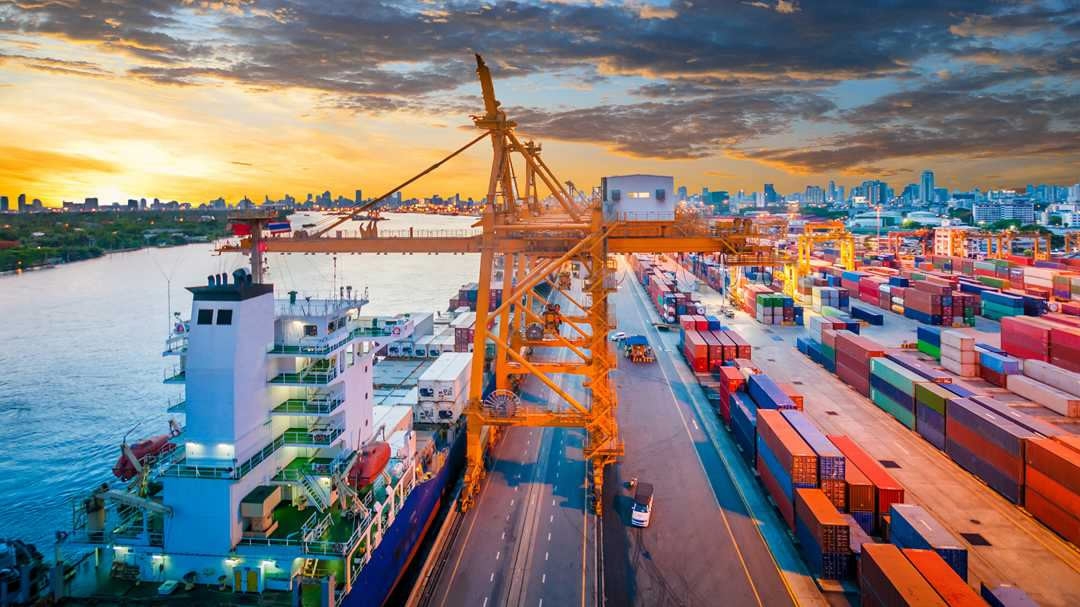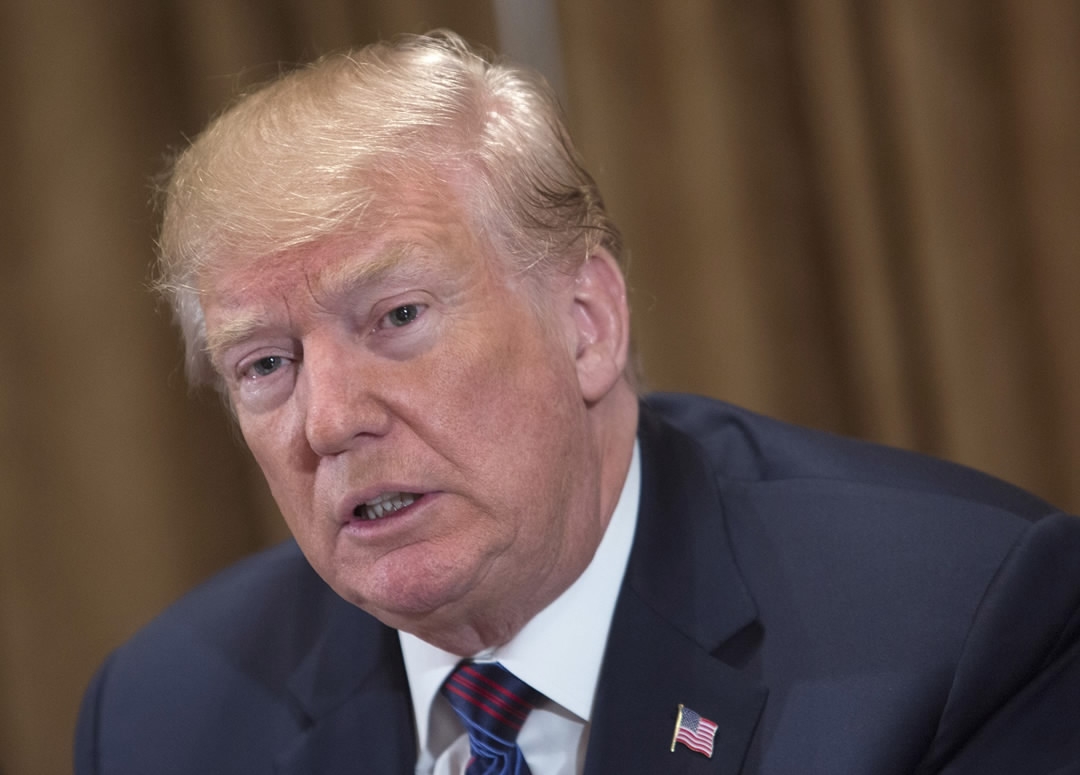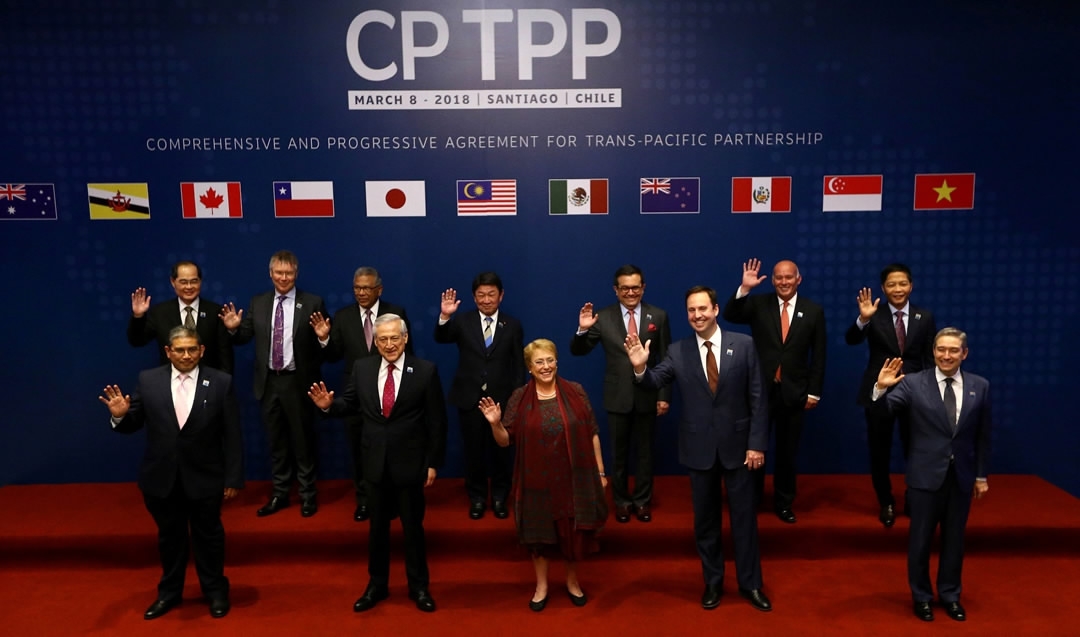
Business
11:35, 14-Apr-2018
Trump says US will only rejoin Pacific trade pact if terms are improved
CGTN

US President Donald Trump said the US would only join the Trans-Pacific Partnership, a multinational trade deal his administration walked away from last year, if it offered “substantially better” terms than those provided under previous negotiations.
His comments, made on Twitter late Thursday, came only hours after he had unexpectedly indicated the US might rejoin the landmark pact, and amid heightened volatility in financial markets as Washington locked horns with China in a bitter trade dispute.
Trump had told Republican senators earlier in the day that he had asked US Trade Representative Robert Lighthizer and White House economic adviser Larry Kudlow to re-open negotiations.

US President Donald Trump participates in a meeting on trade with governors and members of Congress at the White House, Washington, DC, April 12, 2018. /VCG Photo
US President Donald Trump participates in a meeting on trade with governors and members of Congress at the White House, Washington, DC, April 12, 2018. /VCG Photo
In his Twitter post, which came during Asian trading hours, Trump said the US would “only join TPP if the deal were substantially better than the deal offered to Pres. Obama. We already have BILATERAL deals with six of the eleven nations in TPP, and are working to make a deal with the biggest of those nations, Japan, who has hit us hard on trade for years!”
Policymakers in the Asia-Pacific region on Friday responded to the possibility of the US rejoining the trade deal with skepticism.
“If it’s true, I would welcome it,” Japanese Finance Minister Taro Aso told reporters after a cabinet meeting on Friday and before Trump’s tweet. Aso added that the facts needed to be verified.
Trump “is a person who could change temperamentally, so he may say something different the next day,” Aso said.
Australian Prime Minister Malcolm Turnbull, commenting after Trump’s tweet, said it would be “great” to have the US back in the pact though doubted it would happen.
“We’re certainly not counting on it,” Turnbull told reporters in Adelaide in South Australia.
The TPP, which now comprises 11 nations, was designed to cut trade barriers in some of the fastest-growing economies of the Asia-Pacific region.

Representatives of members of Trans-Pacific Partnership (TPP) trade deal wave as they pose for an official picture before the signing agreement ceremony in Santiago, Chile, March 8, 2018. /VCG Photo
Representatives of members of Trans-Pacific Partnership (TPP) trade deal wave as they pose for an official picture before the signing agreement ceremony in Santiago, Chile, March 8, 2018. /VCG Photo
Trump, who opposed multilateral trade pacts in his election campaign in 2016 and criticised the TPP as a “horrible deal,” pulled the US out of the pact in early 2017. He argued bilateral deals offered better terms for US businesses and workers, and signaled an intention to raise trade barriers.
But Trump is struggling to get support from other countries for his recent threat to impose import tariffs on China and the US farm lobby is arguing that retaliation by China would hit American agricultural exports.
Trade experts believe Trump is probably trying to placate his political base in the wake of criticism over the US-China tariff standoff.
“Well I think you have to take it seriously but I think there is an enormous chance that this is simply posturing or a tactical decision taken to placate concerned governors and senators from agricultural states that could be affected by China imposing tariffs,” said Charles Finny, a Wellington-based trade consultant and a former New Zealand government trade negotiator.
“I think it’s very important for people to realize, particularly given this most recent tweet, if there is a negotiation it will not be an easy one. It will take a long time and also there is huge risk around ratification.”
Source(s): Reuters

SITEMAP
Copyright © 2018 CGTN. Beijing ICP prepared NO.16065310-3
Copyright © 2018 CGTN. Beijing ICP prepared NO.16065310-3